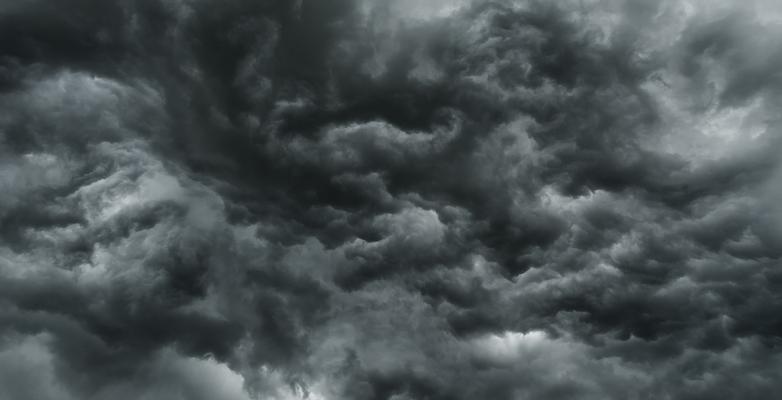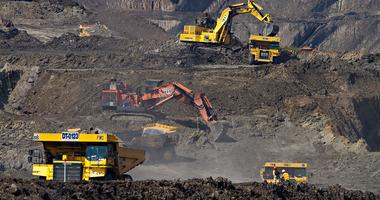
What Four Storms a World Apart Tell Us about Our Shared Future
It's been a terrible two weeks for storms. It's also been two weeks that in many respects shows the contours of our new normal – and why asking if climate change caused X storm is increasingly a waste of oxygen.
Last week, Hurricane Fiona tore through Puerto Rico, the Dominican Republic, and Turks and Caicos, unleashing winds of up to 115 miles per hour and dumping as much as 32 inches of rain in some locations. It grew to Category 4 strength with sustained winds of 130mph for a time and significantly impacted Bermuda. It then barreled into Canada, that’s right Canada, with reportedly historic-level high winds, torrential rainfall, and storm surge.
In roughly that same time, Super Typhoon Nanmadol slammed into southwest Japan with violent winds reaching an incredible 145 mph (234 km/h) and bringing nearly 1,000 millimeters (39 inches) of rain to at least one town.
The human costs have been immense. Hurricane Fiona claimed at least eight lives across the Caribbean. In Puerto Rico, still recovering from the devastation of Hurricane Maria five years ago, the heavy rains set off mudslides and "catastrophic" flooding left residents without power and two-thirds without drinking water for days.
How to Help Puerto Rico: Mutual Aid and Nonprofit Organizations to Support
In Canada, Fiona left an "unprecedented trail of destruction," with hundreds of thousands without power in Nova Scotia, Prince Edward Island, Newfoundland, Quebec and New Brunswick, and one reported death.
In Japan, the impacts from Super Typhoon Nanmadol were equally devastating, with millions told to evacuate before heavy rain, floods, and powerful winds left four dead and over 140,000 without power and destroyed homes and businesses.
As if these storms weren’t enough, Super Typhoon Noru (Karding) made a devastating direct hit to the northern Philippines over the weekend as an equivalent Category 5 storm leaving villages in tatters and killing at least six people. The storm defied forecasts by strengthening from a 97kph (60mph) tropical storm into a 257kph (160mph) super typhoon in less than 24 hours. That rate of intensification is among the fastest on record.
In the Caribbean, Hurricane Ian is expected to undergo rapid intensification too threatening Cuba and eventually Florida as a powerful hurricane.
Why Fiona and Nanmadol Point to the Future
So, what do these storms have in common other than timing?
Each exemplifies trends we're seeing more and more of, thanks to rising temperatures. And by the same token, each offers a preview of the kinds of storms we can expect in the years ahead.
Wetter Storms
Fiona was the first major hurricane of what scientists predicted would be a busy season in the Atlantic. But that first-in-line status did nothing to diminish its power.
Part of what made Fiona so destructive was the sheer volume of water coming down from a relatively slow-moving storm. There's a (climate) reason for part of that. Namely, as air and water temperatures rise with climate change, evaporation rates go up too. Warmer air can also hold more moisture.
The net result is that storms like Fiona will increasingly carry and release huge amounts of water in the form of torrential rain.
Rapid Intensification
Much like Super Typhoon Noru (Karding), Super Typhoon Nanmadol began life as just a cluster of thunderstorms (aka "a tropical disturbance") on September 11. Two days later it had strengthened into depression and two days after that into a typhoon.
From September 15 to 16, Nanmadol went from typhoon to category 4-equivalent super typhoon with sustained winds of 150 mph. The pace of this change is both remarkable and remarkably dangerous, giving authorities little time to warn millions to evacuate before one of the strongest storms in the nation's history hit.
These recent examples of rapid intensification are not flukes. A recent study of hurricanes from 1982–2009 in Nature found a "significant increases in tropical cyclone intensification rates in the Atlantic basin that are highly unusual compared to model-based estimates of internal climate variations."
In other words, what's happening goes beyond general natural variability, with the results suggesting "a detectable increase of Atlantic intensification rates with a positive contribution from anthropogenic forcing." Or more simply, climate change. A similar trend of rapid intensification of tropical cyclones has also been observed in the western North Pacific.
Other research has gone further, with a 2018 study predicting "a dramatic increase in the global incidence of rapid intensification as a result of global warming, and 20% increase in the number of major hurricanes globally."
The key takeaway here is that we can expect storms to keep getting wetter and to have the potential to become much, much stronger much, much faster. Other factors can contribute, but climate change has significantly shifted the baseline so that the elements contributing to storms growing even soggier or stronger are nearly always there. The degree to which they shape the path of destruction is beside the point.
To put it another way, what Fiona, Nanmadol, Noru, and Ian underscore is the fact that our weather now is just climate changed – and we'll be living with the tragic results for a long time.
The science matters, but so does the human cost. If you're able, consider helping organizations helping those hardest hit by Hurricane Fiona in Puerto Rico.




